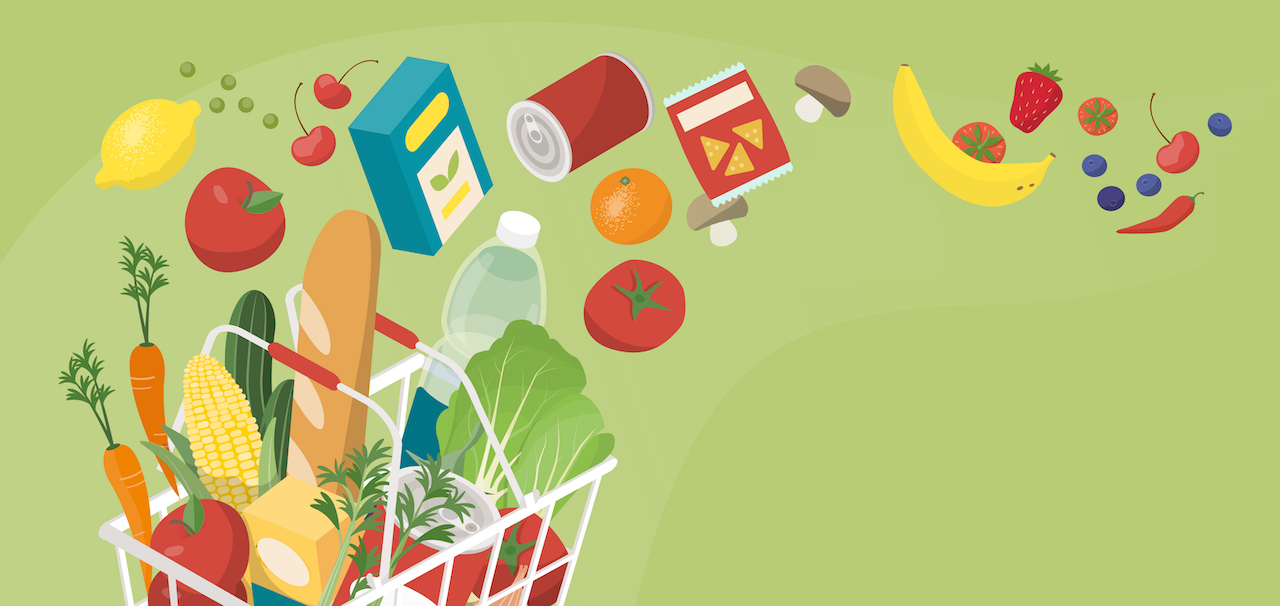You’ve mentally prepared yourself to live a healthy and balanced lifestyle; now it’s time to get practical!
If you prepare your own meals, it is easier to stick to your dietary changes. The simplest way to do this is really in the planning process. Planning your meals will help keep you on track (and away from your favourite takeaway).
Get to grips with healthy food
Healthy eating means a range of food (protein, fruits, vegetables, grains, and dairy food groups), all of which help maintain your overall health. According to the World Health Organization, five portions of fruit and vegetables a day reduces the risk of many diseases and helps you get enough daily fiber.
Start preparing your meals
Cooking for yourself is great because you have more control over preparations, ingredients and quantities.
- Don’t label foods as “off-limits.” Reduce your portion sizes of unhealthy foods and don’t eat them as often. As you eat less unhealthy foods, you may find yourself craving them less or think of them as only occasional treats.
- Train yourself to eat smaller portions. When eating out with friends or family, choose a starter instead, and split a big serving of the main dish with a friend. Don’t supersize anything.
- Trick your brain a bit and have your meals on smaller plates or in bowls. If you don’t feel full at the end of the meal, add more leafy greens or end off your meal with fruit or a small slice of cheese.
- Don’t rush; take your time when you eat. It actually takes a few minutes for your brain to tell your body that it’s had enough food. Stop eating before you feel full.
5 healthy eating essentials
- Dairy: Foods in this group are great sources of calcium, which is important for healthy and strong bones.
- Fruit: Fruit is loaded with vitamins, minerals, dietary fibre and many phytonutrients (natural nutrients in plants), that help you stay healthy.
- Grains (cereal) foods: Always opt for wholegrain alternatives to breads, cereals, rice, pasta and noodles. Refined grains in baked goodies can be high in added sugar, salt and fat.
- Protein (beef, poultry, fish, eggs, dairy products, nuts, seeds, and legumes): Protein builds, maintains, and repairs the tissues in your body. Your body uses the protein you eat to make lots of specialised protein molecules. Your body uses protein to make haemoglobin; the part of red blood cells that carries oxygen to every part of your body.
- Vegetables: Veggies should make up a large part of your daily food intake for every meal and snack times. They’re packed with vitamins, minerals, dietary fibre and phytonutrients too.
Healthy cooking
- Grilling, steaming, boiling and roasting are the best healthy cooking methods.
- Cook foods in as little water as possible for a short time to preserve all water-soluble vitamins like Vitamin B and C.
- Don’t rely on salt only; use different herbs and spices for additional flavor.
- Dodge those packaged or processed foods, which are likely to contain added salt, sugar and fats. By eating these foods you unknowingly increase your intake of salt, sugar, and fats.
Timing is everything
Have breakfast and eat smaller meals throughout the day. A healthy breakfast can help jumpstart your metabolism. Eat small and healthy meals throughout the day to keep your energy levels up.
Avoid eating late at night to keep those unnecessary calories and kilos at bay. Eating late doesn’t leave enough time before going to bed to digest your food well.

